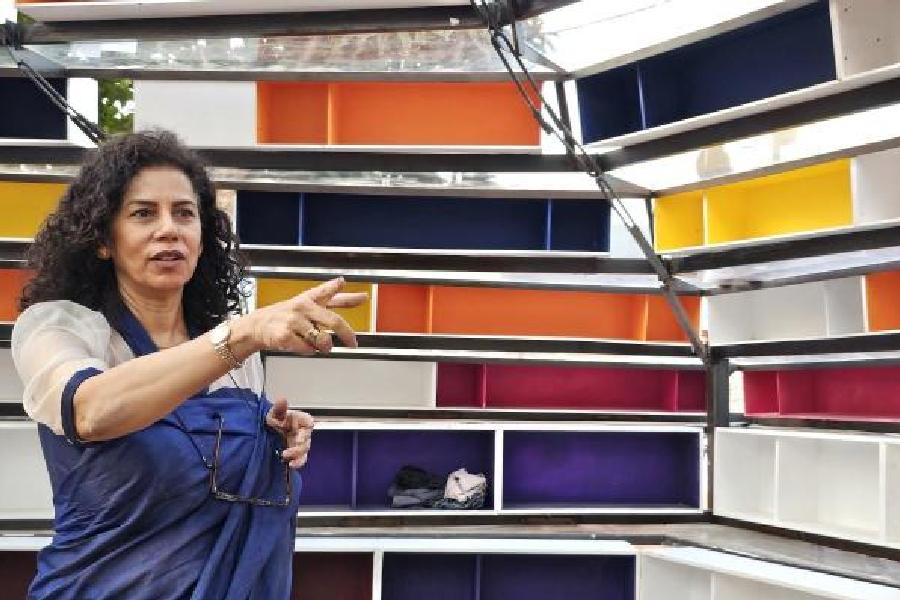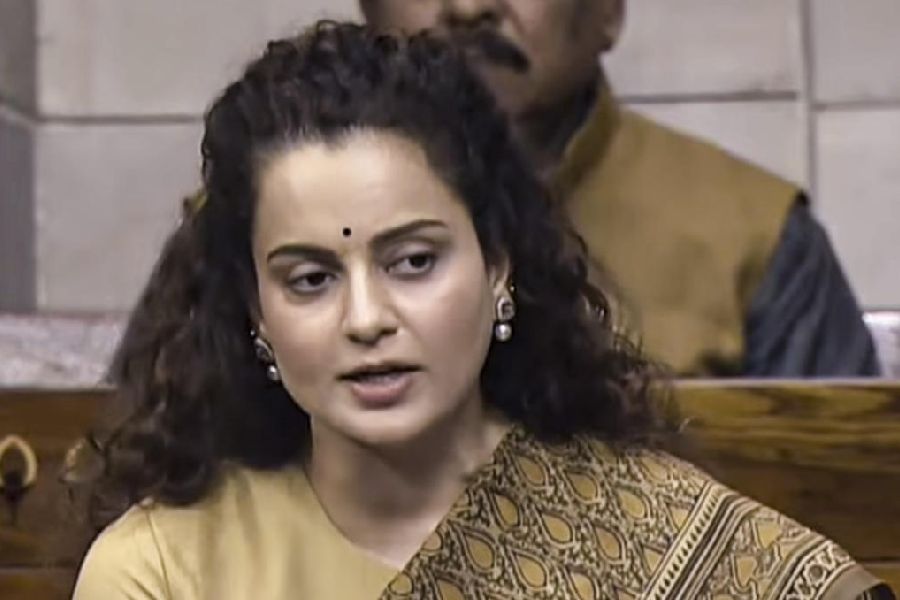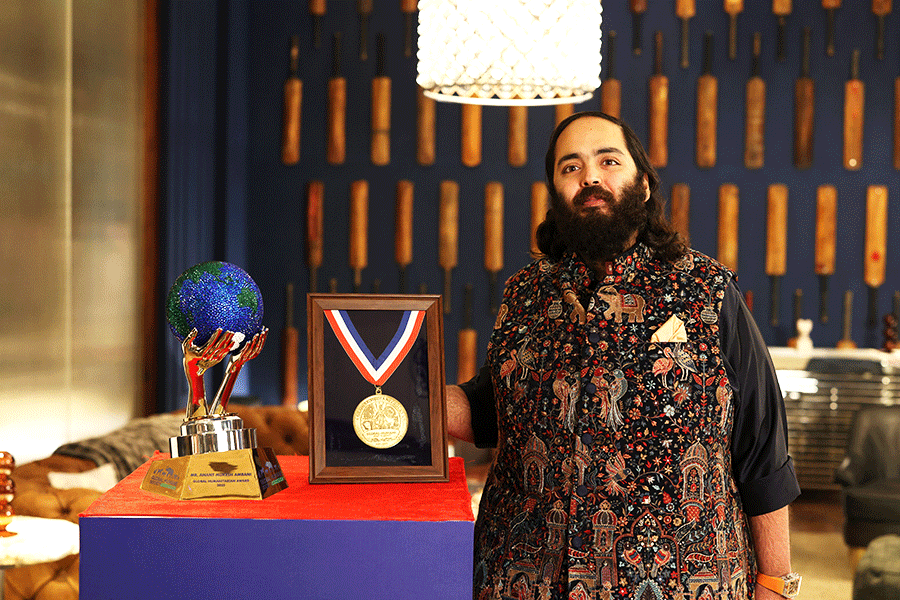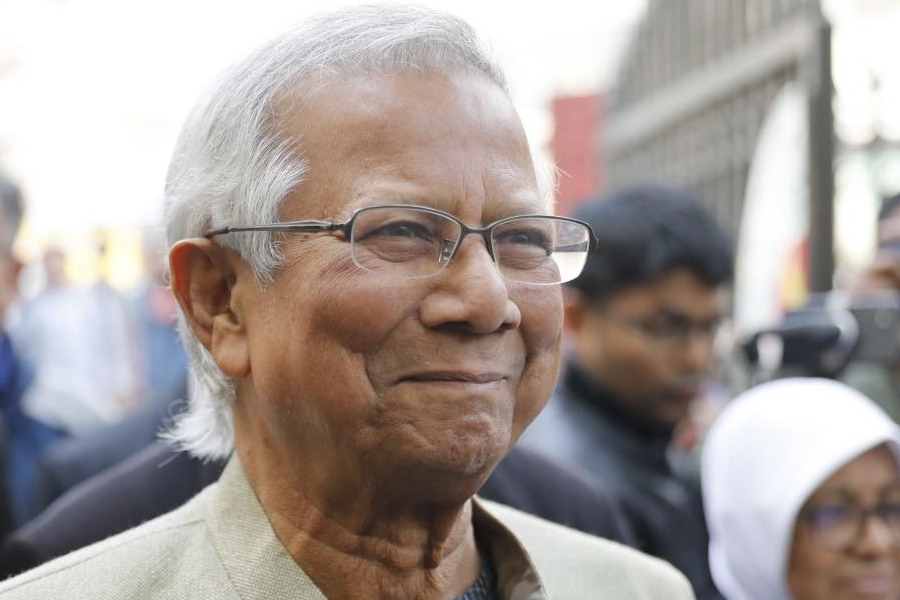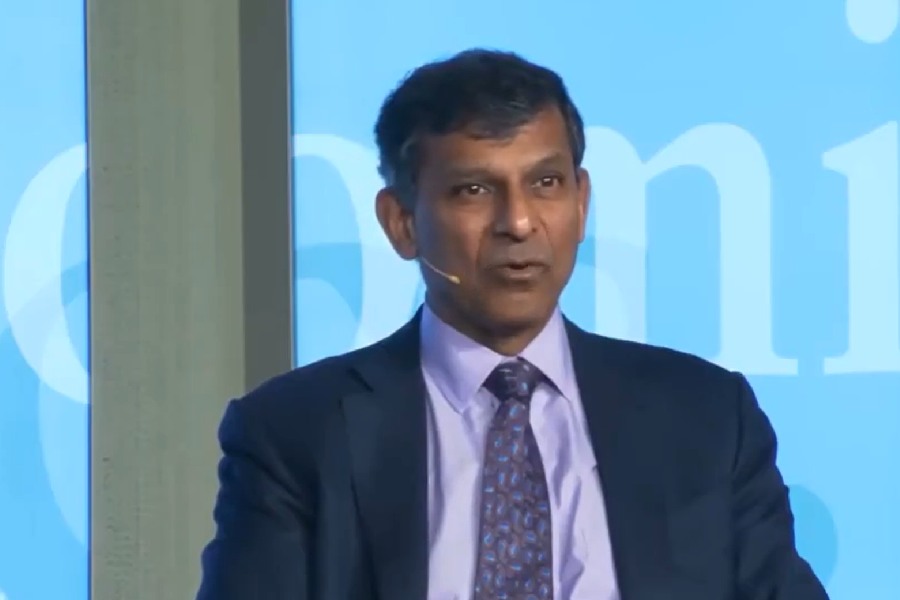The German pavilion at the Book Fair is an ode to minimalism, utility and colour. On closer inspection, the assembly of suspended book shelves comes across as a nod to sustainability as well. Daylight comes in through transparent panels on the roof and also gaps between shelves on the walls, reducing the dependence on electric lights inside in the sunny hours.
The pavilion is the work of Anupama Kundoo, an architect who has offices in Pondicherry and Berlin. “My house in Pondicherry, made of flower pots, is acclaimed for sustainability,” says the lady, who had studied architecture at Sir JJ College of Architecture in Mumbai.
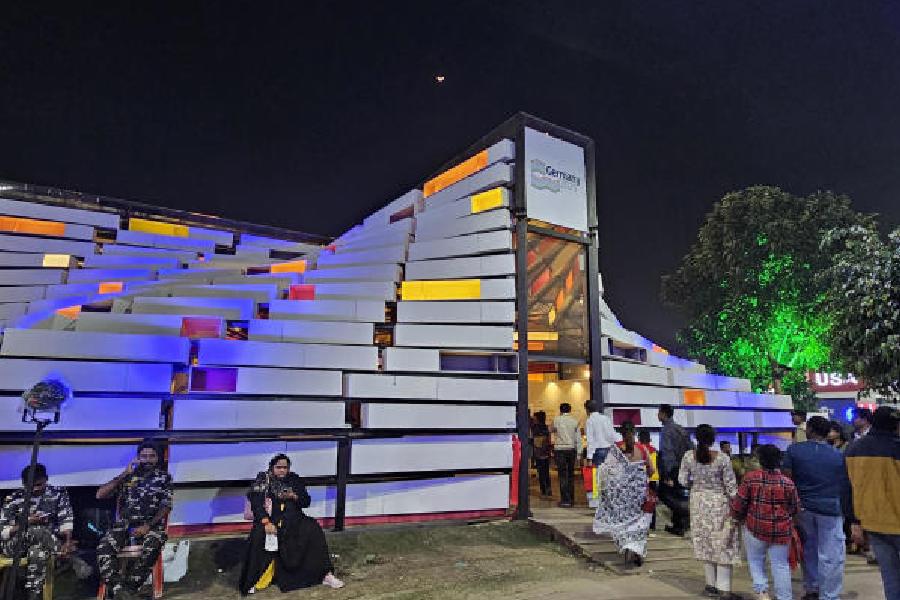
Visitors to the Germany theme pavillion at the Book Fair
The design proposed by Kundoo’s firm was shortlisted from among the entries received and later selected for implementation.
The philosophy behind the pavilion at the Book Fair is Shelf Life. “The pavilion is a celebration of the bookshelf and its role in everyday life. Shelves are a kind of social infrastructure. If you put them anywhere in the streets, people can put the books they don’t want in them and take the books they want. It’s like giving life to a shelf and making architecture out of it,” she said.
Kundoo wants to encourage the practice in the city as well. “Nowhere else on the planet do you have booklovers like in Calcutta,” she said.
“Bookshelves should be there at every bus stop. People who finish reading can deposit a book there for others to pick up. Books should circulate,” she argues.
In terms of design, the pavilion space is L-shaped. Four distinct clusters of book shelf modules lean inwards against each other as they rise, meeting at the top in a symbolic “plus” sign. “This convergence represents the coming together of different fields of specific knowledge, illustrating that learning is supported and strengthened through interdisciplinary exchange. By twisting the form geometrically, the L is going towards the inside, and that allows us to create a sheltered space without using a separate wall and a separate roof. “
She recalls having created a structure in Barcelona which represented a reading place as a free library. “It created a roofing element and seating out of discarded books through direct reuse. We wanted to create awareness about the amount of books wasted in society through giving them an afterlife. But such a concept wouldn’t work here as we do not step or sit on books in our culture. Because of my roots, I wanted to do something special in Calcutta that the Germans will also relate to,” said the architect whose father hailed from Calcutta and mother from Dhaka.
The pavilion has been designed in such a way that everything can be recycled. “We will redistribute some of the shelves,” a Goethe-Institut official said.

